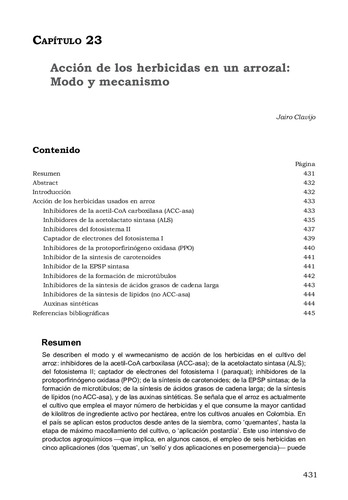Acción de los herbicidas en un arrozal: modo y mecanismos
Action mode and mechanism of herbicides in rice fields The action mode and mechanism of herbicides in rice crops are described, specifically inhibitors of acetyl-CoA carboxylase (ACC); acetolactate synthase (ALS); photosystem II; photosystem I electron acceptor (paraquat); protoporphyrinogen oxidase (PPO); carotenoid synthesis; EPSP synthase; microtubule formation; synthesis of long-chain fatty acids; lipid synthesis (no ACC); and synthetic auxins. Among the annual crops planted in Colombia, rice is currently the crop that uses the largest number of herbicides and the one that consumes the highest number of kiloliters of active ingredient per hectare. Products are applied prior to planting (burn-down) through the crop’s maximum tillering stage (late postemergence). In some cases, this intensive use of agrochemical products implies the use of six herbicides in five applications (two burn-out herbicides, one sealer, and two postemergence applications). Several active ingredients with the same action mechanism can even be used, creating a high selection pressure among weed biotypes. Furthermore, this type of management accounts for 18%-20% of the crop’s production costs.

